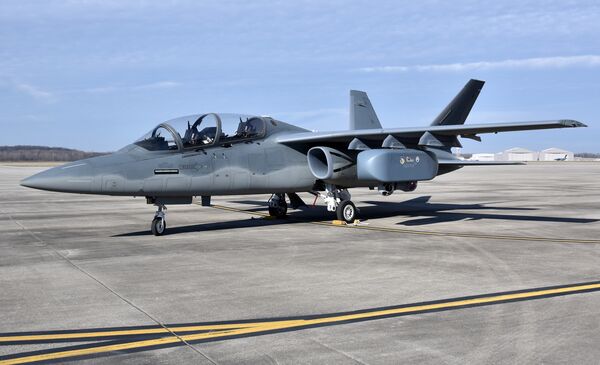
Air Force Research Laboratory's AgilePod mounted on the wing on the Scorpion Light Attack/ISR jet. The USAF is looking to develop smaller, lower-SWaP sensors like AgilePod to augment the service's sensing grid concept. (Air Force Research Laboratory)
The US Air Force (USAF) is shifting focus from developing expensive, highly tailored intelligence, surveillance, and reconnaissance, (ISR) sensor systems to ones that are comparatively lower cost with significant reductions in size, weight, and power (SWaP) and increased interoperability with other US and allied weapons systems, according to a senior service official.
The air service is “very used to [developing] exquisite sensors that are very, very good but ... can [only] get very exquisite information or data”, oftentimes at extreme financial cost in terms of development and fielding, said USAF Colonel Honoré Spencer, who heads the service's Sensing Grid Cross Functional Team (CFT) for the Air Force Futures directorate.
“But as we look at the [combat] environments we're going to face, really looking at lowering costs, lowering ... size, weight, and power of [future] sensors is going to be critically important, particularly if we're trying to use them in mass,” said Col Spencer.
“There's only so many resources available, and there's only going to be so many [ISR] capabilities [that] are available ... so you have to have that shift” away from those niche sensor capabilities to options that are more interoperable with an emphasis on SWaP, he added during a briefing on the future of the air force's sensor grid in late March.
Looking to read the full article?
Gain unlimited access to Janes news and more...



